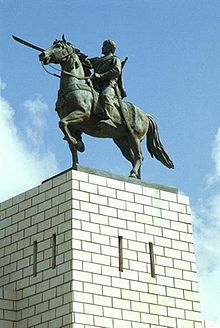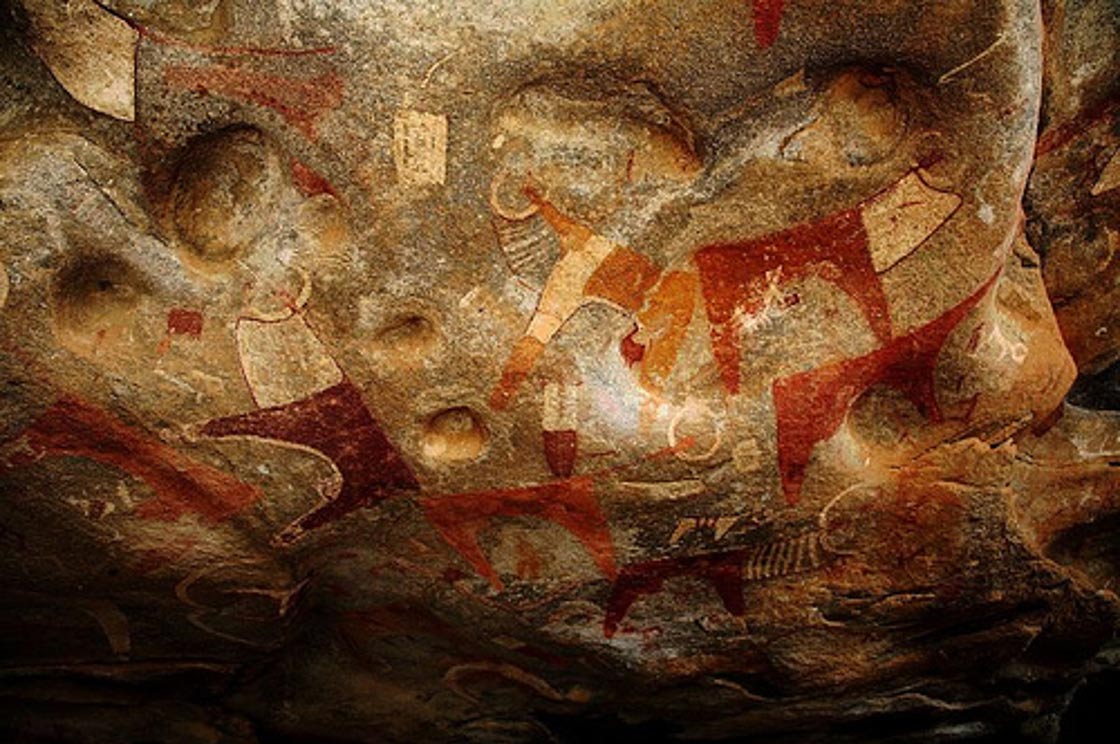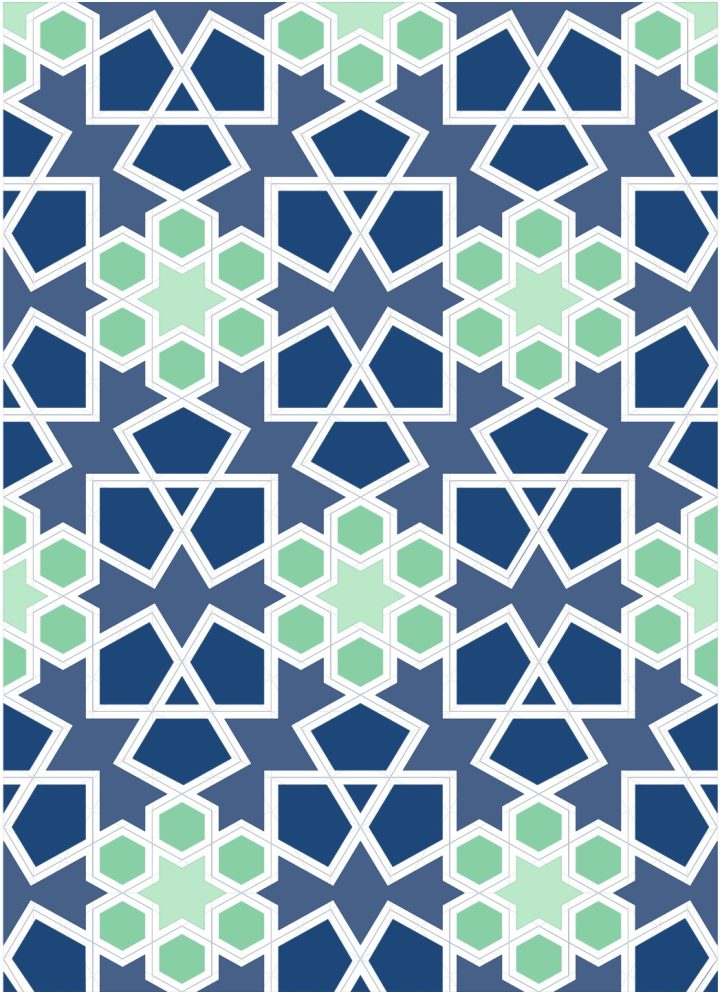The Somali people have been creating art
since they arrived in the area. Evidence of rock art has been found in many
areas, especially in the northern parts of Somalia. They were probably some of
the few parents who encouraged drawing on the walls. Some of the best examples
we have in not only Somalia, but in Africa on a whole is found at Laas Geel.
These pre-historic drawing depict dog-like animals, giraffes, and cows (that
were in ceremonial robes – must be very special cows!) alongside humans.
As Islam became more widespread, artistic subject matter changed with it. In
Islam, it is strictly advised not to create art that depicts people or animals.
I've never understood this, but I read that it may be tied to the creation of a
human being, even if it's just a drawing. (But then, how do they explain actual
birth?) The reasoning is lost on me, but it is what it is. So, many artists
adapted and created their art in different ways. Islamic art tends to be more geometric and often in the form of tessellations.
One of the ways they did that was through metalwork. Gold and other metals have
been used in jewelry making, which was also seen as a show of wealth and
status. Intricately designed knives and daggers are also common among men. And
at one time, Somalia was a leader in the textile industry. Mogadishu in
particular was a central hub for textiles for nearly 700 years up through the
late 19th century.
If you are a carver in Somalia, you are quite respected as an artist, even today. Wealthy families used to employ carvers who specialized in exotic woods and stones like marble to create elaborate homes worthy of being a museum. However, artisanal woodcarving is also a key occupation among nomadic tribes. A good carver created everyday objects like combs, spoons, and other utensils to more complicated structures like an aqal (a portable nomadic home). Today, they use modern equipment to help make the process go a little faster. (Ain't nobody got time to do that by hand.)
The ancient Somalis also built pyramids for burials in the same style as the Egyptians. Their homes were also built in the Egyptian style by building courtyards and stone walls around them. As Islam began to spread, its influences on architecture also took hold by its use of arches and geometric designs.
| Somali-American painter Abdulasis "Aziz" Osman |
| Tabayin al-Haqa'iq li Sharh Kanz al-Daqa'iq |
 |
| Muhammad Abdullah Hassan |
Somali literature wasn't just relegated to poetry. They did branch out. Different kinds of folktales were told to children growing up. These stories were passed down from generation to generation. Some stories were more like fables, designed to teach kids lessons about how to behave, through both negative and positive reinforcement. Some of the more common folktales include "A Lion's Tale" (two Somali immigrant children struggle to adapt to their new life), "Dhegdheer the Cannibal Woman" (told to children to convince them the importance of discipline), "Caraweelo" (used to teach young girls the "dangers" of being overly feminist), and "Coldiid the Wise Warrior" (a warrior who avoids all violence).
Today, there are many Somali writers, publishing works from Islamic/religious works to poetry to more secular novels. From the time the Somali language also adopted using a modified Latin script during the 1970s, many more Somali authors began being published on the international scene. One of the most well-known Somali authors is the award-winning Nuruddin Farah. He's known for his books From a Crooked Rib, Links, and Maps. Another novelist of note is Farah Mohamed Jama Awl, known for his novel Ignorance is the Enemy of Love. Mohamed Ibrahim Warsame "Hadrawi" is a poet often considered Somalia's answer to Shakespeare. Another award-winning Somali poet and novelist who lives in Italy (and is published in Italian) is Cristina Ali Farah. (Farah must be a common name in Somalia or something.)
Up next: music and dance




No comments:
Post a Comment